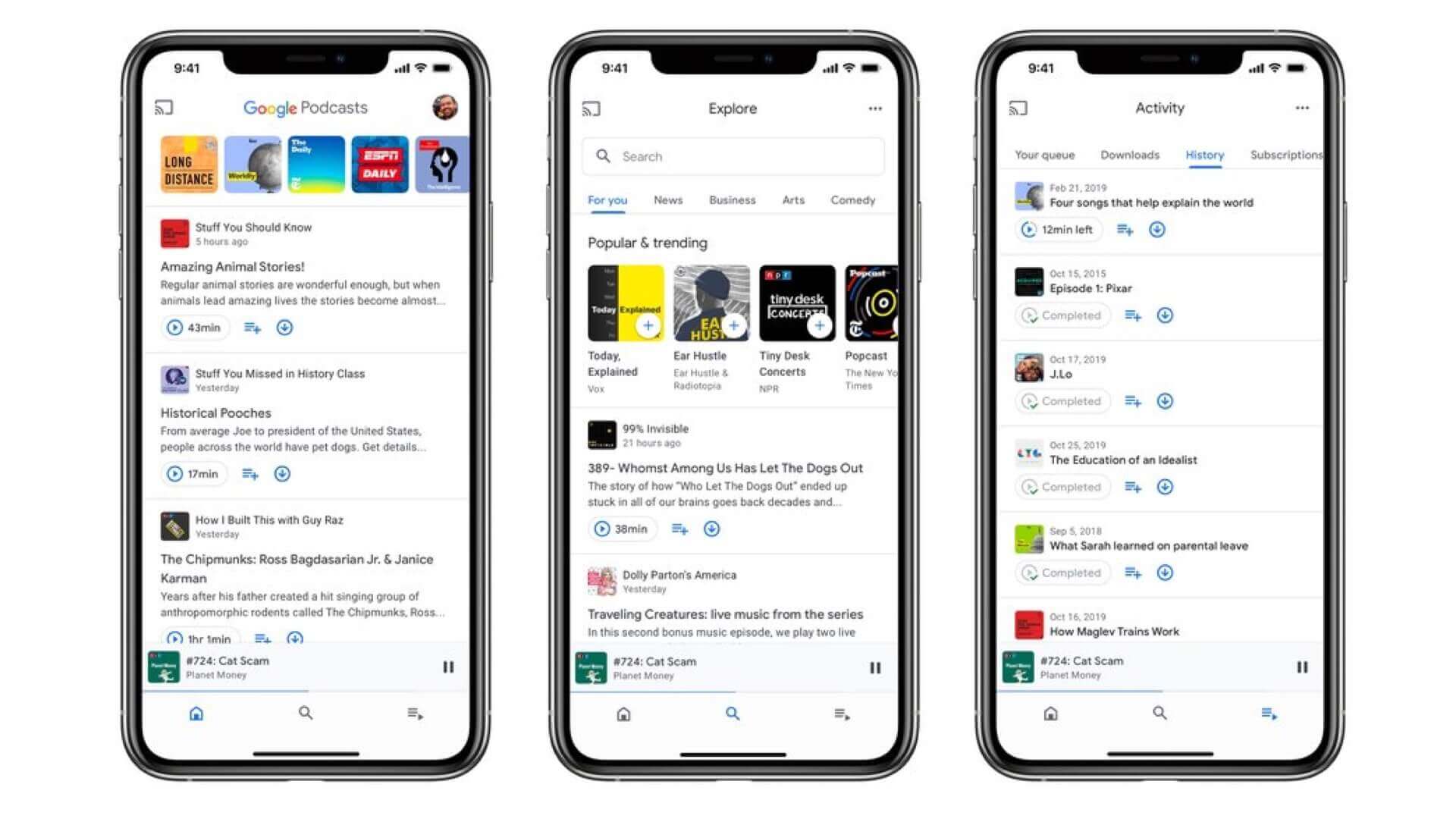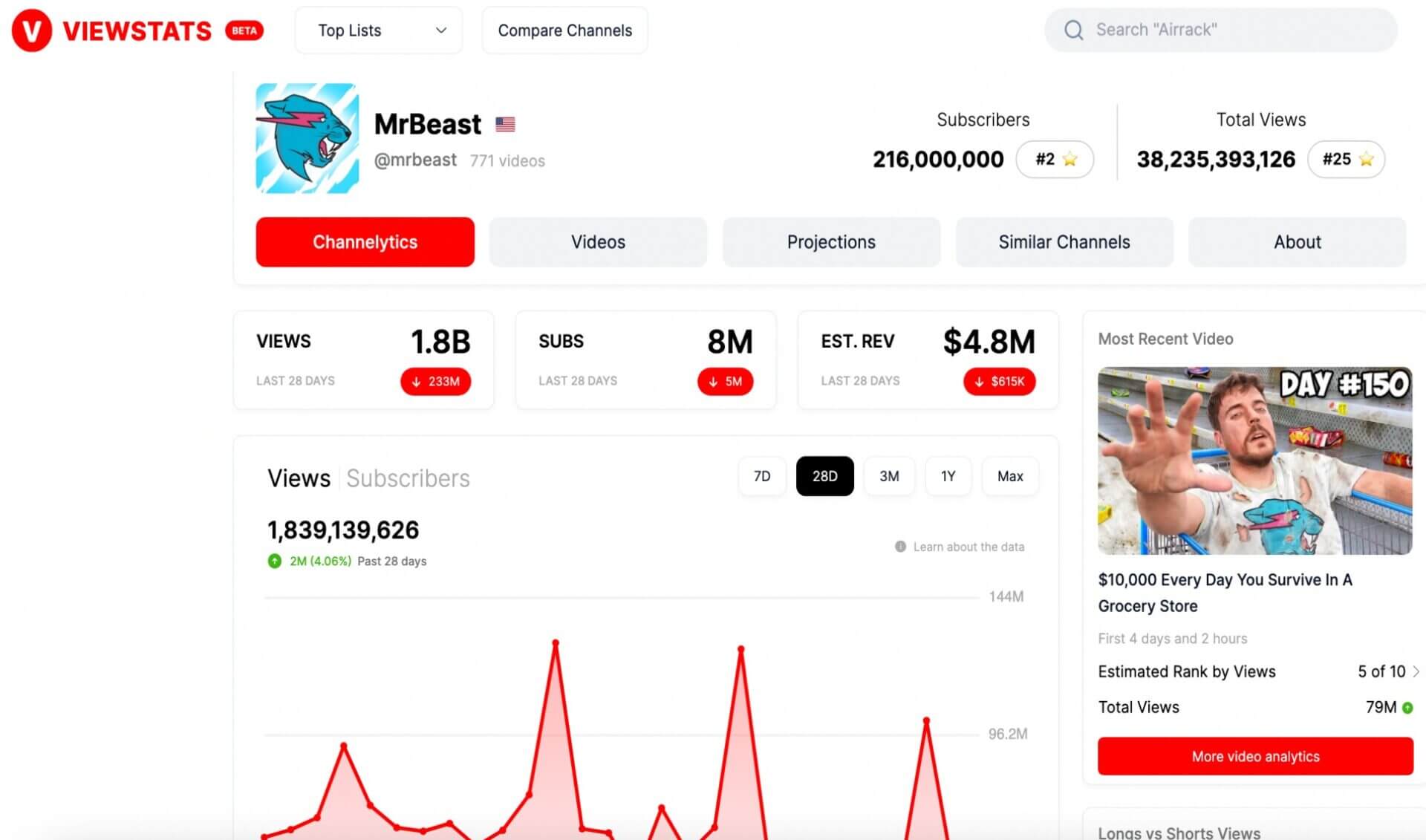In a strategic move ahead of the planned shutdown of its Podcasts service in April 2024, Google has introduced a podcast export tool, enabling users to seamlessly transfer their podcast subscriptions to YouTube Music or other platforms. The tool is currently accessible to users in the United States and will gradually become available to a wider audience in the future. Google’s Podcasts export feature allows users to initiate the transfer process through both the mobile and web versions of Podcasts. By selecting “Export Subscriptions” from the menu, users can opt to export their subscriptions to YouTube Music. The process begins with a click on the “Export” button. This strategic move comes after Google’s earlier announcement that it would be discontinuing its Podcasts app, offering users an alternative platform for their podcast needs. Although the migration process may take some time, Google emphasizes the significance of the tool, providing users with a practical solution to safeguard their podcast subscriptions. However, it is important to note that not all podcasts may be immediately available on YouTube Music during the migration. To address this, Google allows users to save missing podcasts to their library through the show’s RSS feed link. The launch of this export tool aligns with Google’s commitment to offering users a smooth transition from Podcasts to alternative platforms. While currently limited to the US audience, Google has promised to update users when the export tool becomes available in other regions. As a part of its broader plan, Google had previously stated that listeners would have until March 2024 to continue using Google Podcasts, with an additional grace period until July 2024 to export their subscriptions. The introduction of the export tool reinforces Google’s dedication to facilitating a seamless experience for its users amid the forthcoming changes to its podcast services. This move underscores the broader trend within the tech industry, with companies continuously refining their service offerings and adapting to user preferences. Google’s provision of a user-friendly migration tool reflects its commitment to maintaining customer satisfaction and ensuring a smooth transition during the ongoing evolution of its product portfolio. Source: Tool Battles
Jimmy Donaldson, better known as MrBeast, has ventured into the realm of analytics with the launch of ViewStats, a dedicated platform for YouTube channel analytics.
In the age of social media, influencers have become a vital part of a brand’s marketing strategy. With the rise of Instagram, TikTok, and YouTube, influencer marketing has become an essential way for brands to connect with their target audience. However, for small influencers, finding and securing brand deals can be challenging. In this post, we’ll break down how to find and secure brand deals for small influencers based on their follower count. Under 1000 Followers For creators just starting out, it can be difficult to secure brand deals as they don’t have a significant following. However, there are still a few ways to find brand deals. Be Active on Social Media To increase your chances of getting noticed by brands, you need to be active on social media. Post frequently, engage with your followers, and use relevant hashtags. You can also reach out to other small influencers and collaborate with them on projects. By building a community of like-minded creators, you can increase your visibility and reach. Utilize Hashtags and Geo-Tags Hashtags and geo-tags are crucial for increasing your visibility on social media. Use relevant hashtags to make your posts more discoverable, and geo-tags to target a specific audience. By using these tools, you can increase your chances of getting noticed by brands. Reach Out to Small Brands Small brands are always on the lookout for new and upcoming influencers to work with. Reach out to small brands in your niche and pitch yourself as an influencer who can help them reach their target audience. You can also offer to create content for them in exchange for free products or a small fee. Some other tips for small influencers just starting out with under 1000 followers are: Create Quality Content: One of the most important things to focus on as a small influencer is creating quality content. Brands want to work with influencers who have a unique style and can produce high-quality content. Experiment with different types of content and find what works best for your niche. By consistently producing great content, you’ll increase your chances of getting noticed by brands. Engage with Your Followers: Engaging with your followers is essential for growing your audience and attracting brand deals. Respond to comments and messages, and take the time to build relationships with your followers. By showing your audience that you care about them, you’ll build a loyal following that brands will want to tap into. Network with Other Influencers: Networking with other influencers can also help you land brand deals. Attend influencer events and connect with others in your niche. By building relationships with other influencers, you can collaborate on projects and increase your visibility. You can also cross-promote each other’s content to reach a wider audience. Take Advantage of Influencer Marketplaces: There are also influencer marketplaces that can help you find brand deals as a small influencer. Platforms like Sponsora and others allow you to create a profile and connect with brands looking for influencers. These platforms are great for getting started and can help you build relationships with brands. Sponsora is one of the only few that accept creators of all sizes. Get started for free! In terms of earning potential, small influencers may not make as much as larger influencers, but they can still earn money through brand deals. Some brands may be willing to work with smaller influencers for a lower fee or in exchange for free products. As you grow your following and increase your visibility, you can start to command higher rates. 1k-5k Followers Once you’ve built a following of 1k-5k followers, you can start to secure brand deals. Here are a few ways to do so: Create a Media Kit A media kit is a great way to showcase your work and attract potential brand partners. It should include your bio, social media handles, statistics on your reach and engagement, and examples of your work. A media kit can make it easier for brands to evaluate your content and decide whether you’re a good fit for their brand. Use Influencer Marketing Platforms Influencer marketing platforms like Sponsora can connect you with brands looking for influencers in your niche. Our platform provide a marketplace where brands and influencers can find each other, negotiate rates, and collaborate on campaigns. Attend Industry Events Attending industry events, such as conferences and trade shows, can help you network with brands and other influencers. These events provide a great opportunity to learn more about the industry and to meet potential brand partners. 10k-100k Followers For influencers with 10k-100k followers, brand deals become more common. Here are a few ways to secure brand deals at this stage: Build Relationships with Brands As you gain more followers, it’s essential to start building relationships with brands. Reach out to brands you love and create content for them in exchange for a fee or free products. By building relationships with brands, you can secure long-term partnerships and increase your earning potential. Pitch Yourself to Brands If you’re interested in working with a specific brand, pitch yourself to them. Send them an email or DM, and showcase your work and why you’d be a good fit for their brand. Make sure to personalize your pitch and show the brand that you’re genuinely interested in working with them. Work with an Agency Working with an agency can help you secure more significant brand deals and simplify the negotiation process. An agency can help you create a media kit, negotiate rates, and manage campaigns. However, keep in mind that agencies often take a significant cut of revenue from your brand deals, and the deals they bring you may not align with your values. 10k-100k followers: Once you’ve reached the 10k-100k follower range, you can start to attract more significant brand deals. This is because you have a solid following that trusts you and your content. At this point, you may also have established yourself as an expert in your niche, which makes you more
YouTube has become a popular platform for creators to showcase their skills and build an audience. However, creating high-quality content consistently takes time, effort, and money. This is where sponsorships come in. Sponsorships provide an opportunity for creators to earn money while doing what they love. So how do YouTubers get sponsors? There are several ways to get sponsorships, including reaching out to brands directly, using talent agencies, and utilizing sponsorship marketplaces like Sponsora. In this post, we will delve into each of these methods and explore how creators can use Sponsora to find brand sponsors. Reaching out to Brands Directly One way that YouTubers can get sponsors is by reaching out to brands directly. This method involves researching brands that align with the creator’s content and audience and then pitching a sponsorship proposal. The proposal should include information about the creator’s audience, the type of content they create, and how the brand can benefit from partnering with them. While this method can be effective, it requires a lot of time and effort. Creators need to identify brands that are a good fit, research their contact information, and craft a persuasive proposal. Additionally, not all brands may be open to sponsorships, and even if they are, they may not have the budget to work with creators. Using Talent Agencies Another way that YouTubers can get sponsors is by working with talent agencies. These agencies specialize in connecting creators with brands and negotiating sponsorship deals on their behalf. They can help creators secure high-paying sponsorships and ensure that the terms of the deal are favorable. However, working with talent agencies comes with a significant drawback: the high fees. Most talent agencies charge a commission of 20-30% of the total sponsorship fee, which can significantly eat into a creator’s earnings. Utilizing a Sponsorship Marketplace like Sponsora The third way that YouTubers can get sponsors is by using sponsorship marketplaces like Sponsora. These platforms connect creators with brands that are looking for sponsorships. Creators can browse through the available sponsorship opportunities and apply to the ones that align with their content and audience. Sponsora, in particular, is a great platform for creators looking to find brand sponsors. The platform features a wide range of niches and talents, making it easy for creators to find opportunities that match their content. Additionally, Sponsora ensures that all creators on the platform are fully opted-in, eliminating the risk of working with scraped data. Moreover, Sponsora offers a flexible fee structure. Creators can choose between a free tier that charges a 15% commission on sponsorship fees or paid plans with lower commission rates. This means that creators can earn more money from sponsorships than they would if they were working with a talent agency. In addition to using Sponsora’s Sponsorship Marketplace, there are several other ways that YouTubers can get sponsorships and brand deals. Networking: YouTubers can reach out to brands directly or attend industry events to network with brand representatives. They can also collaborate with other YouTubers who already have sponsorships and ask for introductions or referrals. Pitching: YouTubers can create a pitch deck that outlines their audience demographics, engagement rates, and content style, and send it to brands they would like to work with. This can be a great way to show brands the value of collaborating with a particular YouTuber. Affiliate programs: Many brands have affiliate programs where YouTubers can earn commissions by promoting their products and services. These programs usually provide YouTubers with a unique referral link to share with their audience. When someone clicks on the link and makes a purchase, the YouTuber earns a percentage of the sale. Product reviews: YouTubers can review products and services on their channels and receive compensation from the brands they feature. This is a common type of sponsorship for beauty, tech, and lifestyle channels. Brands may provide the product for free or pay the YouTuber for their time and review. Sponsored content: YouTubers can create sponsored content for brands that align with their channel’s niche and audience. This can take the form of a dedicated video, sponsored mentions within a video, or branded integrations. Brands may pay a flat fee for the sponsored content or offer a revenue share based on the performance of the video. Overall, there are many different approaches that YouTubers can take to secure sponsorships and brand deals. It’s important to focus on building a strong and engaged audience, creating high-quality content, and building relationships with brands that align with their values and niche. While using a sponsorship marketplace like Sponsora can be an efficient and effective way for YouTubers to find brand sponsors, it’s important to also explore other options and strategies to maximize their earning potential and build long-term partnerships with brands.
Content creation has become a popular and lucrative career path for many aspiring entrepreneurs, influencers, and creators. With the rise of social media platforms and the increasing demand for digital content, there are numerous niches that offer unique opportunities for content creators to thrive. In this post, we will explore the top 5-10 content creation niches, along with information on the highest paying content on youtube based on CPC (cost per click) from YouTube ads. Personal Finance and Investing With the growing interest in financial literacy and investing, personal finance and investing have become a popular content creation niche. Creators in this niche share tips and advice on budgeting, saving, investing, and building wealth. Content can range from educational videos on investment strategies, reviews of financial products, and interviews with financial experts. The CPC for YouTube ads in this niche can be high, ranging from $0.50 to $2.00 or even higher, depending on the target audience and keywords. Technology and Gadgets As technology continues to advance rapidly, the demand for content related to gadgets, tech reviews, and tutorials has also increased. Creators in this niche cover topics such as smartphone reviews, software tutorials, gaming, and emerging technologies. The CPC for YouTube ads in the technology and gadgets niche can vary, but it generally falls in the range of $0.30 to $1.50 or higher, depending on the competition and target audience. Beauty and Fashion The beauty and fashion niche has been a popular content creation niche for years, with creators sharing beauty tips, makeup tutorials, fashion hauls, and style advice. This niche often attracts a large and engaged audience, making it an attractive choice for content creators. The CPC for YouTube ads in the beauty and fashion niche can range from $0.20 to $1.50 or higher, depending on the target audience and keywords. Travel and Adventure Travel and adventure content has become increasingly popular, with creators sharing their experiences, travel tips, and destination reviews. This niche appeals to those who are passionate about exploring new places and seeking unique adventures. The CPC for YouTube ads in the travel and adventure niche can vary widely, depending on the location, keywords, and target audience, but it can range from $0.30 to $2.00 or higher. Health and Fitness The health and fitness niche is another popular content creation niche, with creators sharing workout routines, nutrition tips, and wellness advice. With the increasing interest in fitness and wellness, this niche offers opportunities for creators to share their knowledge and expertise. The CPC for YouTube ads in the health and fitness niche can vary, but it generally falls in the range of $0.30 to $1.50 or higher, depending on the target audience and keywords. Cooking and Food The cooking and food niche has gained popularity in recent years, with creators sharing recipes, cooking tutorials, and food-related content. This niche attracts food enthusiasts and those who enjoy trying new recipes and exploring different cuisines. The CPC for YouTube ads in the cooking and food niche can range from $0.20 to $1.50 or higher, depending on the target audience and keywords. Parenting and Family The parenting and family niche is a popular choice for content creators who share advice, tips, and stories related to parenting, pregnancy, and family life. This niche appeals to parents, caregivers, and those interested in family dynamics and child development. The CPC for YouTube ads in the parenting and family niche can vary, but it generally falls in the range of $0.20 to $1.00 or higher, depending on the target audience and keywords. Home Improvement and DIY As more people are spending time at home and looking for ways to improve their living spaces, the home improvement and DIY niche has gained popularity. Home improvement is one of the only sectors that sees spikes of growth during economic downturns. Creators in this niche share tutorials, tips, and hacks for home improvement projects, interior design, and DIY crafts. The CPC for YouTube ads in the home improvement and DIY niche can vary, but it generally falls in the range of $0.20 to $1.00 or higher, depending on the target audience and keywords. Lifestyle and Vlogging The lifestyle and vlogging niche is a broad category that encompasses a wide range of topics, such as daily vlogs, challenges, lifestyle hacks, and personal stories. Creators in this niche share their daily lives, experiences, and insights with their audience, creating a sense of connection and relatability. The CPC for YouTube ads in the lifestyle and vlogging niche can vary widely depending on the content and target audience, ranging from $0.10 to $1.00 or higher. Business and Entrepreneurship The business and entrepreneurship niche is gaining popularity as more people are interested in starting their own businesses and pursuing entrepreneurship. Creators in this niche share tips, strategies, and advice on various aspects of business, such as marketing, sales, finance, and leadership. The CPC for YouTube ads in the business and entrepreneurship niche can vary, but it generally falls in the range of $0.50 to $2.00 or higher, depending on the target audience and keywords. It’s important to note that the CPC for YouTube ads can fluctuate based on factors such as location, competition, seasonality, and advertisers’ bidding strategies. Additionally, YouTube’s algorithm is constantly evolving, and content creators should focus on creating high-quality, engaging content that resonates with their audience, rather than solely relying on CPC as the sole indicator of success. In conclusion, content creation offers lucrative opportunities in various niches. The highest paying CPC for YouTube ads can vary depending on the niche, target audience, and keywords. If you’re considering starting a content creation channel, it’s important to choose a niche that aligns with your interests, expertise, and audience preferences. By creating valuable and engaging content, building a loyal audience, and staying up-to-date with industry trends, you can maximize your earning potential as a content creator.
Creating sponsored content or integrated brand deals for YouTube videos can be a lucrative way for creators to monetize their content and collaborate with brands. However, it requires careful planning, execution, and adherence to best practices to ensure a successful partnership that benefits both the creator and the brand. In this post, we will explore the top best practices for creating sponsored content or integrated brand deals for YouTube videos. Disclosure and Transparency: Transparency is key in sponsored content. As per the Federal Trade Commission (FTC) guidelines, creators are required to disclose any sponsored content or brand deals in their YouTube videos. This disclosure should be clearly visible and audible to viewers, and should be made at the beginning of the video or in the video description. This ensures that viewers are aware that the content is sponsored and promotes transparency and trust between the creator and their audience. Authenticity and Relevance: Authenticity is paramount in sponsored content. Creators should only collaborate with brands that align with their content and audience. The brand and its products or services should be relevant to the creator’s niche and audience demographics. Creating sponsored content that feels authentic and resonates with the creator’s content and audience can yield better engagement, trust, and long-term brand partnerships. Creativity and Integration: Sponsored content should not feel like a blatant advertisement. Creators should strive to create content that integrates the brand’s messaging or products seamlessly into their video, while maintaining their unique creative style. This can be achieved by creating engaging storylines, incorporating the brand’s products or services in a natural and non-intrusive way, and maintaining the overall tone and style of the creator’s content. Research and Due Diligence: Before entering into a brand partnership, creators should conduct thorough research on the brand and its products or services. This includes understanding the brand’s values, reputation, target audience, and previous brand collaborations. Creators should also review the brand’s guidelines and requirements for sponsored content, such as usage of logos, trademarks, or messaging. Additionally, creators should negotiate and clarify the terms and expectations of the brand partnership, including payment, deadlines, deliverables, and exclusivity. Quality and Professionalism: Sponsored content should meet the same standards of quality as the creator’s regular content. Creators should ensure that their videos are well-produced, visually appealing, and aligned with their usual content in terms of editing, graphics, and overall production value. Professionalism should be maintained throughout the entire process, from initial communication with the brand to the final delivery of the sponsored content. Genuine Endorsement: Creators should only promote products or services that they genuinely believe in and have tested or used themselves. Viewers can easily spot inauthentic endorsements, and it can negatively impact the creator’s credibility and relationship with their audience. Creators should provide honest and transparent reviews or testimonials about the brand’s products or services, highlighting both the positive and negative aspects, if applicable. Long-term Relationship Building: Creating sponsored content should not be a one-time transaction, but rather an opportunity to build a long-term relationship with the brand. Creators should strive to create value for the brand by delivering on their promises, meeting deadlines, and exceeding expectations. Building a positive relationship with the brand can lead to repeat collaborations, referrals, and increased trust and credibility for the creator. Regular Audience Engagement: Sponsored content should not distract from the creator’s regular audience engagement. Creators should continue to provide value to their audience by creating regular non-sponsored content and engaging with their viewers through comments, social media, and other platforms. Maintaining a strong connection with the audience and prioritizing their needs and interests can foster loyalty and trust, and ultimately benefit the creator and the brand in the long run. Compliance with YouTube Policies: Creators should always ensure that their sponsored content complies with YouTube’s policies and guidelines. This includes avoiding any content that violates YouTube’s community guidelines, such as promoting hate speech, violence, or illegal activities. Creators should also be aware of YouTube’s policies on disclosure of paid promotions, which require clear and conspicuous disclosure of sponsored content to viewers. Failure to comply with YouTube’s policies can result in penalties, such as demonetization or removal of the video, and can harm the creator’s reputation and relationship with the brand. Measuring and Reporting Results: Finally, creators should measure and report the results of their sponsored content to the brand. This includes providing data on video views, engagement metrics, and any other key performance indicators (KPIs) agreed upon with the brand. Creators should be transparent about the performance of the sponsored content, both in terms of successes and areas for improvement, and use this feedback to continuously improve their content and strengthen their relationship with the brand. In conclusion, creating sponsored content or integrated brand deals for YouTube videos can be a lucrative way for creators to monetize their content and collaborate with brands. By following best practices such as disclosure and transparency, authenticity and relevance, creativity and integration, research and due diligence, quality and professionalism, genuine endorsement, long-term relationship building, regular audience engagement, compliance with YouTube policies, and measuring and reporting results, creators can create successful and mutually beneficial partnerships with brands. It is essential for creators to prioritize the needs and interests of their audience, maintain authenticity, and adhere to YouTube’s policies to ensure a positive experience for both their viewers and the brand partners.







